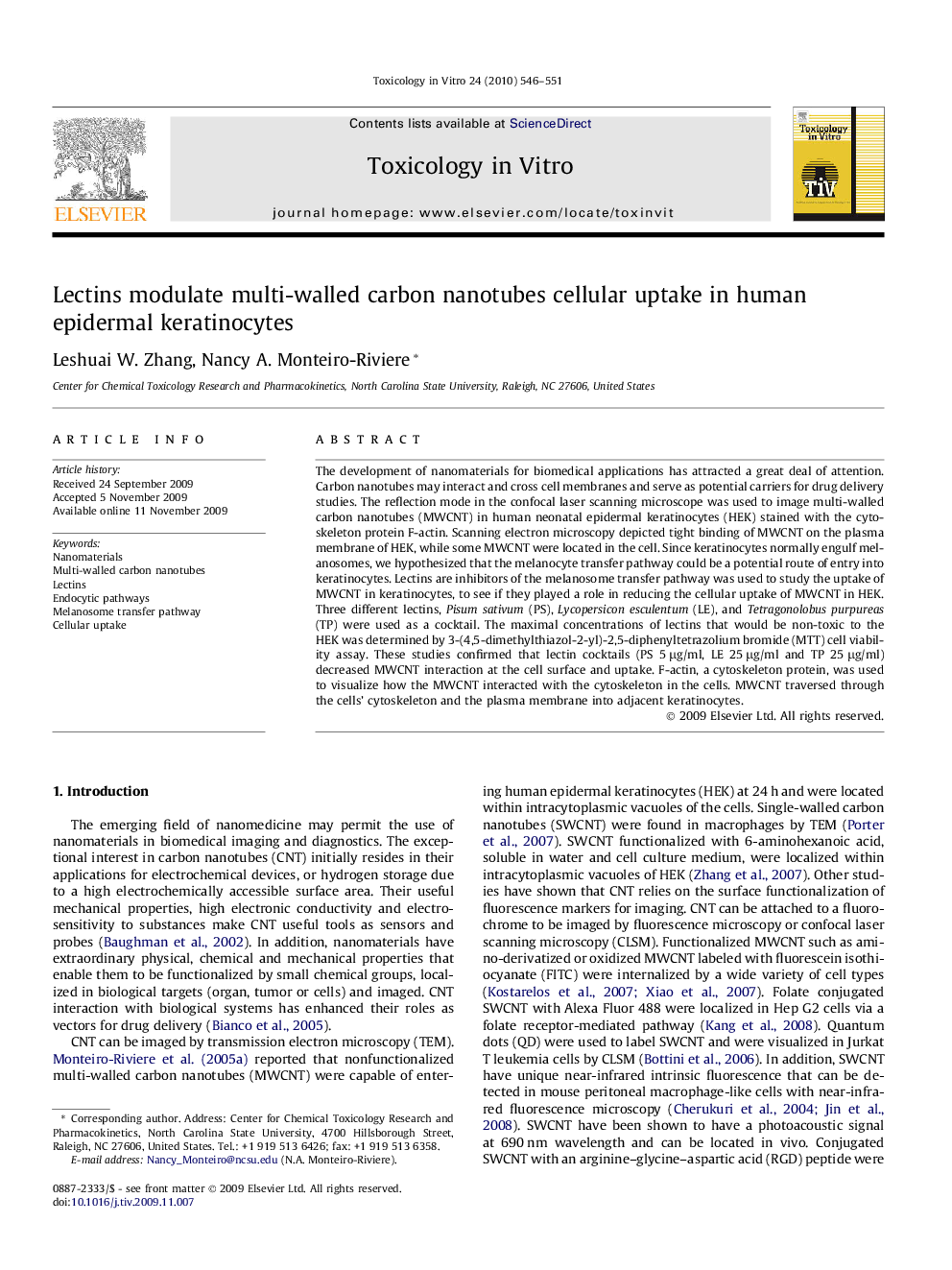| Article ID | Journal | Published Year | Pages | File Type |
|---|---|---|---|---|
| 2603347 | Toxicology in Vitro | 2010 | 6 Pages |
The development of nanomaterials for biomedical applications has attracted a great deal of attention. Carbon nanotubes may interact and cross cell membranes and serve as potential carriers for drug delivery studies. The reflection mode in the confocal laser scanning microscope was used to image multi-walled carbon nanotubes (MWCNT) in human neonatal epidermal keratinocytes (HEK) stained with the cytoskeleton protein F-actin. Scanning electron microscopy depicted tight binding of MWCNT on the plasma membrane of HEK, while some MWCNT were located in the cell. Since keratinocytes normally engulf melanosomes, we hypothesized that the melanocyte transfer pathway could be a potential route of entry into keratinocytes. Lectins are inhibitors of the melanosome transfer pathway was used to study the uptake of MWCNT in keratinocytes, to see if they played a role in reducing the cellular uptake of MWCNT in HEK. Three different lectins, Pisum sativum (PS), Lycopersicon esculentum (LE), and Tetragonolobus purpureas (TP) were used as a cocktail. The maximal concentrations of lectins that would be non-toxic to the HEK was determined by 3-(4,5-dimethylthiazol-2-yl)-2,5-diphenyltetrazolium bromide (MTT) cell viability assay. These studies confirmed that lectin cocktails (PS 5 μg/ml, LE 25 μg/ml and TP 25 μg/ml) decreased MWCNT interaction at the cell surface and uptake. F-actin, a cytoskeleton protein, was used to visualize how the MWCNT interacted with the cytoskeleton in the cells. MWCNT traversed through the cells’ cytoskeleton and the plasma membrane into adjacent keratinocytes.
